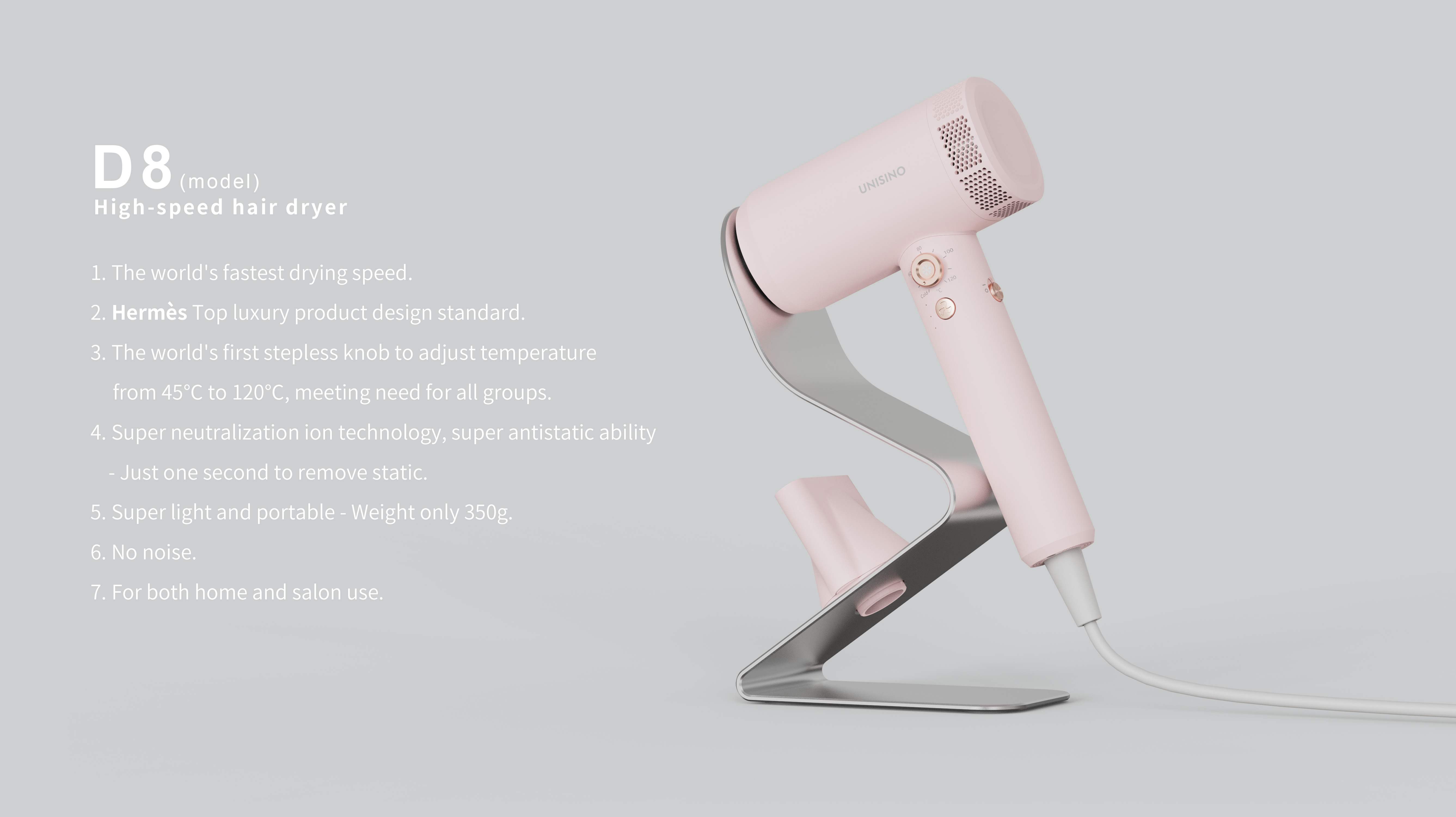
Leave your message and you’ll get:
● 24*7 online service support ● Articles in the hair dryer industry ● Sometimes maybe Discount

● 24*7 online service support ● Articles in the hair dryer industry ● Sometimes maybe Discount
Time:2024-01-10 Views:1

1. Basic principle:
The basic principle of an intelligent high-speed hair dryer is to generate strong wind power through an electric motor, and then concentrate the wind power output through a reasonably designed air duct and nozzle. Intelligent control technology enables it to adjust wind speed, temperature, and other functions according to user needs and environmental conditions.
2. Plan concept:
Electric motor and fan system: It is necessary to choose an efficient and low-noise electric motor, usually using a DC brushless motor. The fan system is designed reasonably to generate strong wind and reduce noise.
Heating system: Considering that many hair dryers have the function of regulating temperature, it is necessary to design a safe and reliable heating system. Usually, PTC heating elements or similar heating elements are used to achieve rapid heating, constant temperature control, and overheating protection.
Air duct design: Ensure full utilization of the generated wind force, focus and output the wind force to the designated position by optimizing the shape and size of the air duct.
Intelligent control system: uses sensors to perceive the environment and user needs, such as temperature sensors, humidity sensors, and acceleration sensors. By controlling circuits and algorithms, intelligently adjusting parameters such as wind speed, temperature, and operating time to achieve energy-saving and user-friendly operating experience.
Shell and safety design: Design the shell to ensure safe and comfortable grip. At the same time, consider measures such as safety switches and overheating protection to prevent accidents and malfunctions.
Charging and power supply system: Consider using a rechargeable lithium battery system or supplying power through a power adapter. The charging system should be safe and reliable, while also requiring intelligent management of charging and battery status circuits.
User interface: It is necessary to design a simple and user-friendly user interface, usually using buttons, display screens, or touch screens. Users can choose different modes and settings through the interface.
Performance testing and optimization: During the development process, performance testing and optimization are carried out, including wind output, temperature control, energy efficiency, noise, etc., to ensure that the product meets the expected performance indicators.